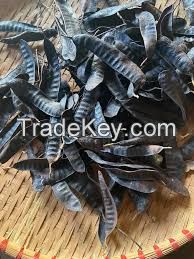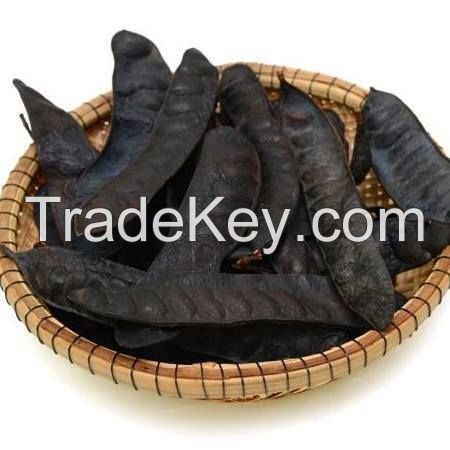





FOB Price
Get Latest Price100 ~ 500 USD / Ton ( Negotiable )
|1 Ton Minimum Order
Country:
Vietnam
Model No:
Ms Moon gleditsia sinensis -- H1230
FOB Price:
100 ~ 500 USD / Ton ( Negotiable ) Get Latest Price
Place of Origin:
Vietnam
Price for Minimum Order:
100 per Ton
Minimum Order Quantity:
1 Ton
Packaging Detail:
customer's request
Delivery Time:
10 to 15 days
Supplying Ability:
10 Ton per Day
Payment Type:
T/T, L/C, Western Union
Product Group :
Introduction
Gleditsia sinensis, commonly referred to as the Chinese Honeylocust, is a remarkable tree species known for its versatility and distinctive features. Native to China and parts of East Asia, this tree has been cultivated and utilized for various purposes across the world. From its aesthetic appeal to its practical uses in agriculture and industry, the Chinese Honeylocust stands out as an invaluable addition to any landscape or project. This comprehensive guide explores the attributes, benefits, and applications of Gleditsia sinensis, providing insights into why it is a choice material for diverse needs.
Botanical Overview
Scientific Name: Gleditsia sinensis
Common Name: Chinese Honeylocust
Family: Fabaceae (Legume Family)
Native Range: China, parts of East Asia
Gleditsia sinensis is a deciduous tree that can reach heights of *0 to *0 meters (*0 to *5 feet) with a broad, spreading canopy. It is characterized by its pinnate leaves, which are finely divided and turn a vibrant yellow in the fall. The tree produces clusters of small, greenish-yellow flowers that develop into long, flat pods. These pods are notable for their unique, glossy appearance and contain seeds surrounded by a sweet, edible pulp.
Key Features and BenefitsAesthetic Appeal
Gleditsia sinensis is prized for its attractive foliage and overall appearance. The trees finely dissected leaves provide a delicate, fern-like texture that creates a pleasing visual effect throughout the growing season. In autumn, the leaves turn a brilliant yellow, adding a splash of color to any landscape. The tree's broad canopy offers a generous amount of shade, making it an excellent choice for urban parks, gardens, and green spaces.
Adaptability and Hardiness
One of the standout features of the Chinese Honeylocust is its adaptability to a variety of soil types and environmental conditions. It thrives in well-drained soils and can tolerate both drought and poor soil fertility. Additionally, Gleditsia sinensis is relatively pest and disease-resistant, which makes it a low-maintenance option for landscaping and forestry applications.
Environmental Benefits
The Chinese Honeylocust plays a significant role in environmental conservation. Its deep root system helps prevent soil erosion and improve soil structure. The tree also contributes to nitrogen fixation, enriching the soil with essential nutrients and promoting healthier plant growth. Its ability to thrive in less-than-ideal conditions makes it a valuable species for reforestation projects and land reclamation.
Ecological Value
Gleditsia sinensis provides habitat and food for various wildlife species. The pods, which contain a sweet, edible pulp, are consumed by birds and small mammals. The tree's dense foliage offers shelter for birds and insects, contributing to biodiversity in the surrounding ecosystem.
Economic Uses
The Chinese Honeylocust is not only valued for its aesthetic and ecological benefits but also for its economic potential. The tree's wood is dense and durable, making it suitable for crafting furniture, tool handles, and other wood products. Additionally, the pods can be harvested and processed into a natural sweetener or used in traditional medicine.
Cultivating Gleditsia sinensis requires careful consideration of its growing conditions and maintenance needs. Here are some key aspects to ensure successful growth:
Planting: Choose a location with well-drained soil and ample sunlight. Although the tree is adaptable, it performs best in full sun. Space the trees adequately to allow for their broad canopy and prevent overcrowding.
Watering: While Gleditsia sinensis is drought-tolerant, regular watering during dry periods helps establish young trees and promotes healthy growth. Ensure that the soil remains moist but not waterlogged.
Pruning: Pruning is typically done to maintain the tree's shape and remove any dead or diseased branches. Regular pruning also helps improve air circulation and reduce the risk of pest infestations.
Fertilization: Although the tree is capable of fixing nitrogen, occasional fertilization with a balanced fertilizer can support overall growth and vigor, particularly in nutrient-poor soils.
Gleditsia sinensis has a wide range of applications, reflecting its versatility and value. Some notable uses include:
Landscaping: The tree is an excellent choice for urban parks, street plantings, and residential gardens. Its attractive foliage and shade-making ability enhance the aesthetic appeal of any landscape design.
Forestry and Reforestation: Due to its environmental benefits and adaptability, Gleditsia sinensis is used in reforestation projects and land reclamation efforts. It helps restore degraded lands and improve soil quality.
Wood Products: The durable wood of the Chinese Honeylocust is used in making furniture, tool handles, and other woodworking projects. Its strength and resistance to decay make it a valuable material for craftsmen and builders.
Traditional Medicine: In traditional medicine, the pods and seeds are used for their purported health benefits. They are believed to have various medicinal properties, including antimicrobial and anti-inflammatory effects.
Gleditsia sinensis is considered an environmentally friendly choice due to its low impact and sustainability. Its rapid growth rate and ability to thrive in various conditions make it a renewable resource. The tree contributes to soil health and supports local wildlife, aligning with sustainable land management practices. By incorporating Gleditsia sinensis into projects and landscapes, individuals and organizations can support ecological balance and promote sustainable development.
ConclusionGleditsia sinensis, or the Chinese Honeylocust, is a versatile and valuable tree species with a range of benefits and applications. From its aesthetic appeal and environmental contributions to its practical uses in woodworking and traditional medicine, this tree stands out as a remarkable choice for various needs. Its adaptability, low maintenance requirements, and ecological value make it an excellent addition to any landscape or project.
| Country: | Vietnam |
| Model No: | Ms Moon gleditsia sinensis -- H1230 |
| FOB Price: | 100 ~ 500 / Ton ( Negotiable ) Get Latest Price |
| Place of Origin: | Vietnam |
| Price for Minimum Order: | 100 per Ton |
| Minimum Order Quantity: | 1 Ton |
| Packaging Detail: | customer's request |
| Delivery Time: | 10 to 15 days |
| Supplying Ability: | 10 Ton per Day |
| Payment Type: | T/T, L/C, Western Union |
| Product Group : | Forestry |




